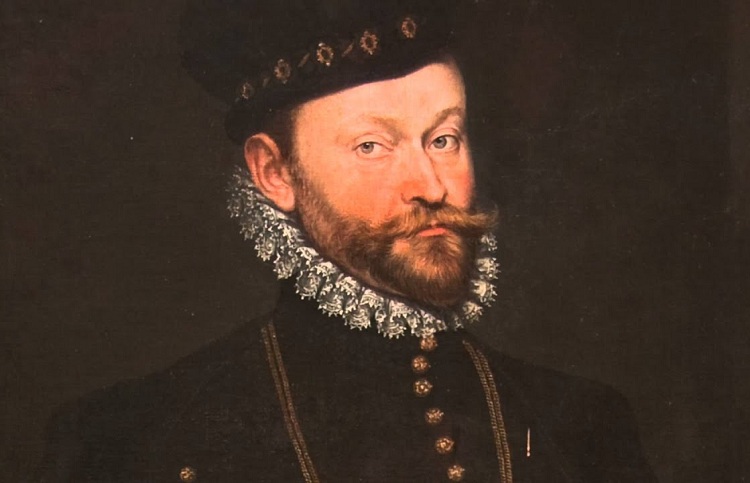Eduardo González
In 1561, exactly 460 years ago, Madrid was literally invaded by a host of new tenants as a result of Philip II’s decision to move the seat of the Spanish Court to the city. Among the new residents of the “Villa y Corte” was inevitably the entire diplomatic corps stationed in the heart of a Monarchy that was, at the time, the most powerful in the world.
Apart from the King and his family, the move involved the massive arrival of members of the high nobility and clergy who occupied the main palatial positions, representatives and bureaucrats of the Councils of State, Castile, the Inquisition, Aragon, the Orders, the Indies and the Treasury, bankers, nodders and suppliers to the Royal House, military contingents responsible for protecting the Royal Alcazar, accountants, secretaries, officers and mayors of the House and Court and chapters of the Military Orders. It is estimated that only this select group exceeded 2,000 people, but if the servants and the inevitable paniaguados are added, the number could exceed 20,000. This was precisely the population Madrid had before the arrival of the Court. Only ten years later, the town already had more than twice as many inhabitants, 41,000, and at the beginning of the 17th century it was already, with 90,000 inhabitants, among the twenty most populated cities in Europe.
The change of location obviously also involved the transfer from Toledo of the Pope’s Nuncio and numerous ambassadors from Christian Europe, from France, Portugal and England to the Italian city-states of Venice, Genoa, Florence, Mantua, Ferrara, Urbino, Luca and Savoy. Of course, the ambassador of the Holy Roman Empire, whose emperors belonged to the House of Austria, the same dynasty as the kings of the Spanish monarchy, was also present.
In order to overcome this problem, the Council of Madrid – which, contrary to the clichés so widespread even among the people of Madrid, was an important city in the whole of Castile which had, in fact, already served as the seat of the royal court on numerous occasions – was forced to set up, by order of the King, the so-called Regalía de Aposento (Lodging Privilege), by virtue of which the people of Madrid whose houses had at least two floors were ordered to reserve half of their dwellings for the new tenants.
It was through a Regalía de Aposento that the House of Diego de Vargas Vivero, belonging to one of the most prominent families of urban feudalism in Madrid, became the residence of the ambassador of the Holy Empire. The house, which no longer exists, used to occupy the current numbers eight and ten of Segovia Street, in front of the Anglona Palace and the San Pedro Church. A plaque from the Town Hall reminds us, since 2016, that this was the site of “the Casa de los Vargas, the residence of the German ambassadors between 1561 and 1616”. In fact, the ambassadors of the Holy Empire (a more correct term than Germany, which did not yet exist as a State) resided in this place from 1561 to 1600, when Philip III moved the Court to Valladolid, and they returned to occupy it after the recovery of the capital in Madrid, between 1606 and 1616.
The ambassadors
In this residence (an irregular three-storey house above ground with an entrance door at the confluence of Conde Steet and Segovia Street) lived until 1606 three particularly well known ambassadors of the Holy Empire. The first was the veteran diplomat and courtly man from León (a fact which should not be surprising, since we are talking about states of an eminently dynastic nature, which were not national, and the Germanic Emperor himself, Ferdinand I, Philip II’s uncle, was from Alcalá de Henares) Martín de Guzmán.
In 1562 he was succeeded by Adam de Dietrichstein, who, although appointed by Ferdinand I, immediately went on to represent another emperor, his son Maximilian II, whose obvious Lutheran sympathies became a headache for the dynasty. For this reason, Philip II even personally commissioned the German ambassador to convince his own emperor (the king’s cousin) to return to the Catholic Church. Dietrichstein was a convinced Catholic, but he understood very well that it was not in his interest to snub an emperor whose interests he represented in Madrid. As he did not want to look bad for Philip II, he carried out the order without taking on more than necessary, and when he left the Embassy in 1571 he did so with his prestige at the top.
Adam de Dietrichstein was succeeded by Hans de Khevenhüller of Aichelberg, who not only resided in the Casa de Vargas, but even died there in 1606, shortly after the return of the Court to Madrid. It is said that the new ambassador became so integrated into the “Villa y Corte” that he became a close friend and trusted man of Philip II, who presented him with the Golden Fleece, and even collaborated actively in the construction of the Segovia Mint. Hans Khevenhüller remained celibate until his death and was succeeded at the head of his county by his brother Bartholomew, whose son, Franz Christoph Khevenhüller, was also ambassador to Madrid with Emperor Ferdinand II. Hans Khevenhüller, who never received a salary for his diplomatic mission and even claimed that he lived “in ruins”, is buried in the monastery of San Jerónimo el Real in Madrid.






